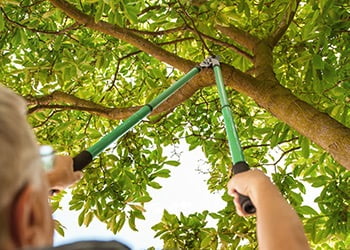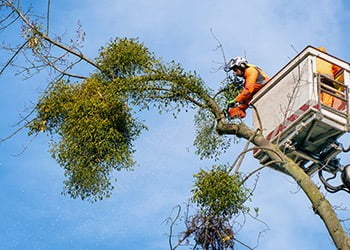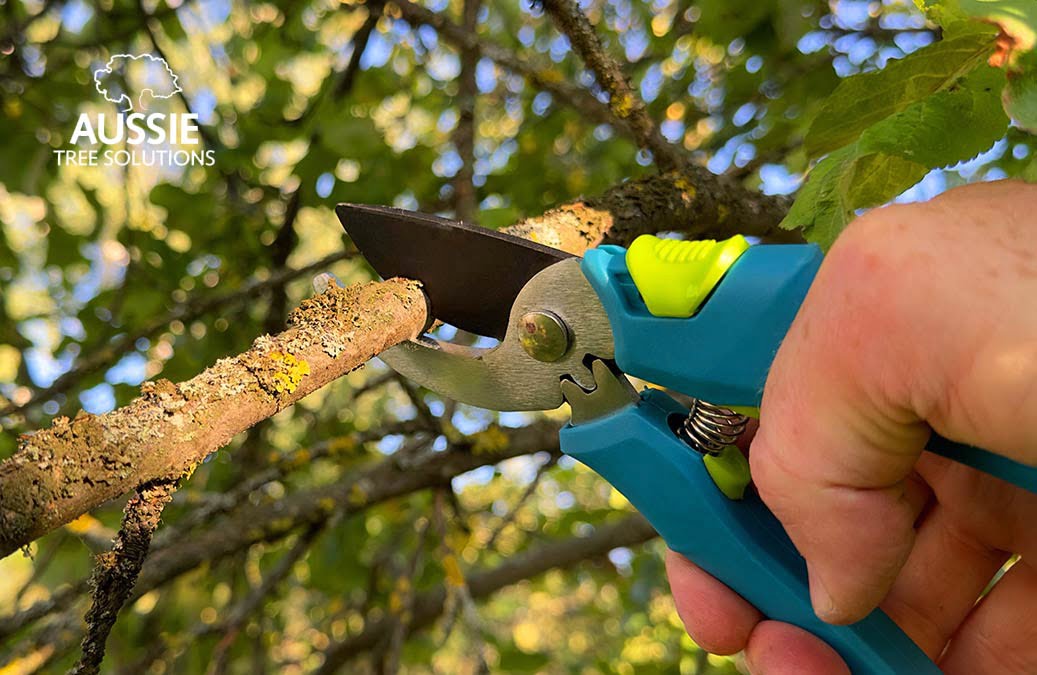Just like us, trees require proper maintenance to ensure their health and longevity, and to keep them looking their best. One of the most important aspects of tree care is pruning. But that doesn’t involve taking a saw or chainsaw and randomly hacking away a few branches for no real reason – no! Tree pruning is an art and a science, and it is critical that the correct tree pruning techniques are used, or you could risk damaging your tree, leaving it susceptible to pest and disease and weakening its structure. Each cut can potentially change a tree’s growth, so no branch should ever be removed without a reason.
Let’s take a look at the different types of tree pruning techniques and when to use them.
General Pruning For Maintenance Or ‘Deadwooding’

Pruning should only be done for a specific reason. These reasons can include encouraging fruit or flower production, to change the direction of a tree’s growth, to thin a canopy, to improve structural integrity or just a general prune to remove dead or dying branches and limbs.
Most routine pruning falls into the latter category and aims to remove any dead, diseased or weak limbs. Also known as deadwooding, this can be done at any time throughout the year with little to no impact on the tree. It is best to remove any limbs and branches in this category as quickly as possible to prevent pest and disease infestation and to maintain the tree’s health and vigour.
Some more specific types of pruning techniques include:
Thinning
Crown thinning is a selective branch removal technique which is used to reduce the density of a tree’s canopy by removing inner branches and crossing limbs. In doing so, you can improve the tree’s structure, help mitigate the impact of strong winds and potential storm damage and increase the movement of air and increase light penetration which reduces the risk of disease. Correct thinning technique can also help retain a tree’s natural shape, reduce the weight on limbs and open up foliage.
Reduction
This technique aims to reduce the overall size of the tree, usually for clearance and vegetation control purposes. Reducing a tree’s height or spread dimensions is done by pruning back the tree’s ‘leaders’ and branch terminals – reducing the overall size of the tree without impacting its form and structural integrity.
Raising
Raising is a selective branch removal technique which removes the tree’s lower branches, to create vertical clearance between the ground and the lower branches of the tree. This is usually done for safety reasons to provide more clear way for pedestrians, vehicles, structures and buildings and to allow for clearer sight lines. It can also promote the growth of lower vegetation and can improve the tree’s aesthetics.
Fruit Tree Pruning
Fruit trees can benefit from selective pruning techniques to optimise fruit production and to help maintain a healthy structure. Crowded or diseased branches are removed to promote sunlight penetration and airflow. Proper pruning can improve both the quality and size of the fruit, extend the tree’s productivity and reduce the risk of disease.
Lopping Or Topping
This outdated practice is one of the most harmful tree pruning techniques which involves drastically cutting back all of the tree’s larger branches at a random point to make them shorter, reducing the overall size of the tree. However, this technique actually has the opposite effect and trees grow back just as large, if not larger however they are weaker and significantly more prone to failure as well as looking terrible. They are more susceptible to pests and disease and ultimately death. So while it may be cheaper initially it will cost you a lot more in the long run.
Get The Job Done Right

If you are going to attempt a DIY tree pruning, do so with caution. Tree pruning can be highly dangerous and when done incorrectly can adversely affect your tree, making it weak and more prone to failure. It’s also important to note that you must always use clean, sharp tools that are fit for purpose, or you can risk damaging the tree and leaving it exposed to disease and infestation.
As we’ve highlighted here, proper tree pruning is a science. Tree pruning should only be done by someone with knowledge about tree biology, who has lots of experience and has the right tools and equipment. Your local Arborist will have the knowledge, skill and experience to prune your trees correctly and keep them strong, healthy and looking great. So, why take the risk?
Call Aussie Tree Solutions for a free quote on our professional tree pruning, consulting Arborist and maintenance services. We have been taking care of Brisbane trees for over forty years and come backed with a strong history of safety, reliability and quality work. Give us a call today for your free quote.

